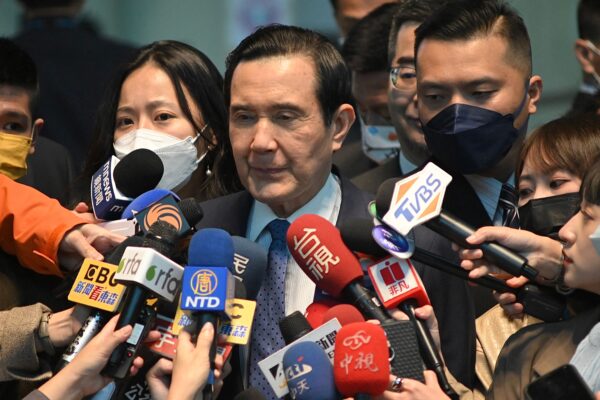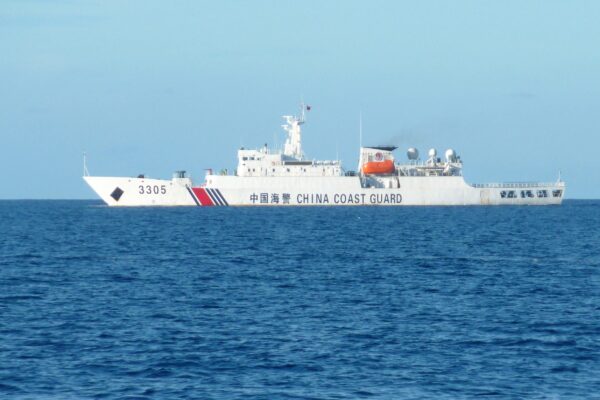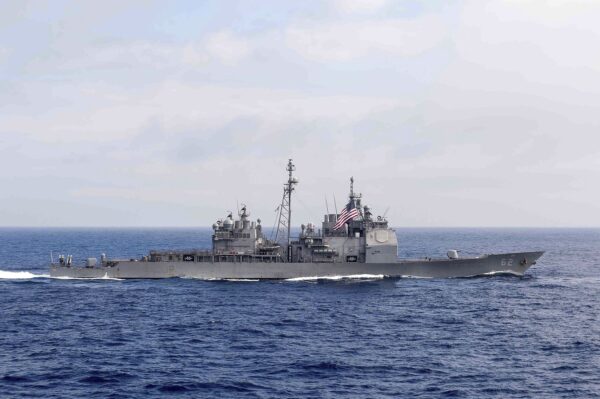Mother of Anti-CCP Taiwan University Professor Dies Mysteriously
Commentary
Dying unnaturally, besides accidents, in Taiwan is rare. An article in Chinese Times, a pro-Kuomintang (KMT) newspaper, titled “National Taiwan University professor’s mother died mysteriously! Tape up the nose and spit out green juice was sent to the hospital and died,” caught my attention.
This article argues that her untimely death could have been politically motivated based on the multiple actions taken by the Chinese Communist Party (CCP) in retribution for Taiwan President Tsai Ing-wen’s trip to the United States. This article also discusses the multiple CCP messaging, “sharp power” actions, and the corresponding Taiwanese and American responses.
Who Is She and Who Is Her Son?
The news reports do not provide her name. We do know that she was the 93-year-old elderly mother of Dr. Ming Chu-cheng (also spelled Juzheng Ming and in Mandarin 明居正教授).
Ming is a professor emeritus of political science at the National Taiwan University (NTU). Born in 1953 in Taipei, Ming was one of the top students in his high school class and was one of the first three students from his high school to be admitted to the prestigious NTU, considered the best school in Taiwan. After completing his bachelor’s degree in international relations in the Political Science Department at NTU, he traveled to the United States. He completed a master’s degree in international relations at the University of Rochester and his doctorate in political science from the University of Notre Dame. He taught at NTU until 2018, when he was honored with being selected as professor emeritus.
Most importantly, he is a Falun Gong adherent and one of the most senior experts in Taiwan concerning the CCP. He is a consultant to many Taiwanese government senior policy-making offices, including the Special Advisory Group on Cross-Strait Relations of the Presidential Palace, a member of the Advisory Committee of the Ministry of Foreign Affairs, and a special researcher of the National Policy Foundation.
Educating the Taiwanese About the CCP
To see the breadth and depth of his impact, Ming has over 2,400 videos referring to him (in Mandarin) on YouTube and almost 28,000 hits on Facebook. He helps the Taiwanese and others understand the CCP threat based on facts, history, theory, and experience. In other words, his exposure of the CCP’s fallacies makes him a target of Beijing.
Political Conditions When She Died
Ming’s mother passed away on April 5. During this time, three important events related to Taiwan occurred, which could be connected to her death: former President Ma Ying-jeou in China, Tsai in the United States, and Rep. Michael McCaul (R-Texas) in Taiwan.
Ma Goes to China
First, Ma went on a 12-day propaganda trip to China, beginning on March 27. I discussed his trip in two articles (here and here).

Tsai Visits the US
Second, and more importantly, Tsai traveled through the United States and on April 6 met with a bipartisan U.S. congressional delegation of 19 members at the Ronald Reagan Library in Southern California, including House Speaker Kevin McCarthy (R-Calif.) and House Democratic Caucus Chair Peter Aguilar (D-Calif.). This should have made the CCP even more flustered than former House Speaker Nancy Pelosi’s visit to Taiwan in August 2022, when she brought a Democratic delegation of only five other U.S. representatives.
McCaul Visits Taiwan
In parallel, less discussed, was the visit of House Foreign Affairs Committee Chairman McCaul who arrived on April 6, along with seven other U.S. representatives, including Young Kim (R-Calif.), who chairs the House Foreign Affairs Subcommittee on the Indo-Pacific, and Ami Bera (D-Calif.).
CCP and PLA Reaction
Since Tsai and her government met with almost five times as many representatives as Pelosi’s visit and the corresponding muted response by Beijing, I suspect that the CCP and the People’s Liberation Army (PLA) were caught unprepared and were also constrained due to other visits. Besides Ma’s 12-day visit to China, French President Emmanuel Macron and European Commission President Ursula von der Leyen also visited the country.
Did CCP leader Xi Jinping have to “curb his enthusiasm” for making a large show of force, or was he overwhelmed?
Unprepared—Xi Asks the CCP Departments for Responses
I can imagine Xi asking the various offices under the CCP what they could do to “resolutely fight back.”
CCP-PLA Initial Reactions:
- Chairman of the Standing Politburo: Xi puts on his Chairman of the Standing Politburo hat and asks different departments what they can do.
- Ministry of Foreign Affairs (MOFA): The MOFA outlines its propaganda strategy, and Xi concurs. The CCP warned the United States about these meetings. MOFA followed up with a censure list, which includes people and organizations that provided “a platform and convenience to Taiwan separatist activities”:
- Taiwan’s (de facto) Ambassador to the United States Hsiao Bi-khim (this is the second time she has been sanctioned);
- Ronald Reagan Presidential Library and Institute and the following people: John Heubusch, former executive director of the Reagan Foundation, and Joanne M. Drake, the foundation’s chief administrator;
- Hudson Institute, a Washington think tank, and the following people at Hudson: President John P. Walters and Sarah May Stern, chair of the Hudson Institute board of directors;
- Prospect Foundation, a Taiwanese think tank, and the Council of Asian Liberals and Democrats, a Thai think tank, were sanctioned “for their involvement in promoting Taiwan independence ‘under the guise of academic and research exchanges.’”
- Ministry of State Security (MSS): Could the MSS have suggested that Xi order their contacts in the Taiwanese underworld to attack a pro-independence individual? This idea is certainly on the minds of people who know Dr. Ming and the work he does to counter the CCP’s ideological, psychological, legal, and media warfare against Taiwan. Was the possible murder of his mother a mafia-like message to others who believe in Taiwan’s independence? Hopefully, the investigation will reveal the truth.
- Ministry of Foreign Affairs (MOFA): The MOFA outlines its propaganda strategy, and Xi concurs. The CCP warned the United States about these meetings. MOFA followed up with a censure list, which includes people and organizations that provided “a platform and convenience to Taiwan separatist activities”:
- Chairman of the Central Military Commission (CMC): Xi puts on his CMC hat, turns to the PLA, and asks them what they can do.
- PLA Rocket Forces (PLARF): The PLARF wants to launch a barrage of missiles just like it did in the 1995-56 Third Taiwan Strait Crisis and in 2022 during the Fourth Taiwan Strait Crisis. However, Xi’s advisers state that using missiles will make more Taiwanese vote for the Democratic Progressive Party (DPP) in the 2024 elections. Xi nixes the missile barrage idea but tells them to stay vigilant.
- PLA Air Force (PLAAF): The PLAAF says it could launch more planes. Xi says to launch planes but not too many. He also does not want the Taiwanese or anyone else to get more concerned about military action against Taiwan. Indeed, he does not wish for countries to increase their defense budgets as they have already done after the August 2022 military exercise fiasco that caused Japan to double its defense budget.
- PLA Navy (PLAN): The PLAN says it could deploy the newest aircraft carrier Shandong (although not operationally ready since it has not completed its sea trials). Xi likes the idea of deploying the Shandong along with other ships.
- According to Eurasian Times, on April 3 and 4, the following PLAN ships sailed between Taiwan and Japan: Type 052C destroyer Changchun and Type 54A frigate Anyang of the Eastern Fleet “sailed from the waters of the East China Sea through the Miyako Strait to the northwestern part of the Philippine Sea adjacent to Taiwan. The Changchun later patrolled the area between the Northeast coast of Taiwan and the Japanese island of Yonaguni.”
- The Ministry of Defense ordered the Chinese Naval Ship (CNS) Shandong (17) and its support ships to transition from the South Asian Sea through the Bashi Strait and to enter the sea southeast of Taiwan to conduct initial sea trials (approximately 200 miles) on April 5 when Tsai met with McCarthy. The CNS Shandong was accompanied by frigate CNS Liuzhou (573) and fleet oiler CNS Chaganhu (905).
- According to USNI News, the Shandong “deployment comes as China’s carrier CNS Liaoning (16) is in maintenance while its third carrier, CNS Fujian (18), is in its fitting-out stage. The Shandong CSG’s composition is smaller compared to Liaoning’s deployment in December” 2022.

- China Coast Guard (CCG): The CCG suggests conducting forcible inspections of Taiwanese-flagged ships in the Taiwan Strait for three days. Xi really likes this option. The idea is innovative, and the legal warfare team inside the PLA Strategic Support Force (SSF) provided the legal argument to show that the U.S. allies can do little to stop them. Although the legal advisers note that the U.S. and Taiwan allies could conduct escort operations for at-risk ships just as the U.S. Navy did during Operation Earnest Will, guarding oil tankers against Iranian attacks while transiting the Arabian Gulf to the Red Sea.
- The CCG ordered the coast guard cutter Haixun 06 to conduct a three-day harassment operation of Taiwanese shipping traveling through the Taiwan Strait. This operation will prepare the CCG to conduct similar acts if the CCP orders a blockade or an invasion of Taiwan. Taiwan’s Ministry of National Defense had not indicated that any cases of forced inspections had occurred at the time of publication.
- PLA Eastern Theater Command (ETC): The ETC proposed a three-day military exercise (after Tsai returns to Taiwan) around Taiwan, called the “United Sword” military exercise from April 8 to 10, to demonstrate the CCP’s displeasure of Tsai’s meetings. Xi agrees to this as long as no missiles are fired, but is disappointed that the exercise proposed was not as long as the 10-day extended exercise (also originally planned for three days) performed after the Pelosi visit last August. However, he asks that they be prepared to extend the exercise if Tsai and her government refused to kowtow to the CCP’s edicts.
- The PLA ETC organized combat preparations around Taiwan in the Taiwan Strait, north and south of Taiwan, and the airspace to the east of Taiwan.
- The Fujian Maritime safety administration also announced that areas around the following locations and dates would be closed due to live fire drills near Luoyuan Wan (a bay in Fujian) on April 11, 13, 15, 17, and 20 and near Pingtan on April 10.

Response to the CCP’s Aggression
The Taiwan and U.S. responses to the CCP’s and the PLA’s actions are listed below.
Response to the PLAN Shandong
- ROC Navy’s response: According to Taiwan’s defense minister, the navy deployed Kang Ding-class and Cheng Kung-class frigates to shadow the Shandong Carrier Strike Group (CSG) deployment within five to six miles.
- ROC Coast Guard (CG) response: The ROC CG patrol vessel, the Hsinchu, closely monitored the CCG’s Haixun 06.
- U.S. Naval Response: The United States deployed the Nimitz Carrier Strike Group from the South Korean area of operations to about 400 miles east of Taiwan, presumably to monitor the Shandong and to provide a deterrent presence.
- Backup: The Seventh Fleet has a total of 67 U.S. naval ships operationally assigned to it (Western Pacific). This amounts to 63 percent of the 107 U.S. naval ships (USS and USNS) deployed around the world (another 21 percent [23] are assigned to the Sixth Fleet in the Mediterranean and 9 percent [10] to the Fifth Fleet in the Arabian Gulf). Besides the Nimitz CSG, three other flattops are operating near Taiwan, Japan, and South Korea:
- America Amphibious Ready Group (ARG);
- Ronald Reagan CSG;
- Makin Island ARG & 13th Marine Expeditionary Unit (MEU);
- An unknown number of U.S. Navy nuclear submarines (SSNs and SSBNs) are operating in the Indo-Pacific area;
- The U.S. Air Force has numerous bases in the area that could also respond to escalating tensions.
- Backup: The Seventh Fleet has a total of 67 U.S. naval ships operationally assigned to it (Western Pacific). This amounts to 63 percent of the 107 U.S. naval ships (USS and USNS) deployed around the world (another 21 percent [23] are assigned to the Sixth Fleet in the Mediterranean and 9 percent [10] to the Fifth Fleet in the Arabian Gulf). Besides the Nimitz CSG, three other flattops are operating near Taiwan, Japan, and South Korea:
- Japan Self-Defense Forces (JSDF) keep tabs on the Shandong deployment by shadowing the PLAN CSG with the Japanese guided-missile destroyer JS Sawagiri (DD-157). The JSDF is also carefully watching the CCG actions in the Taiwan Strait because of the concern that the CCG could also disrupt Japanese commercial shipping.
Response to Chinese Coast Guard Grey Zone Blockade
The threat to use the CCP’s Coast Guard to conduct harassment inspections of ships traveling through the Taiwan Strait continues the false tradition of the CCP claiming this area as part of the territorial waters. These actions were concocted as part of the legal warfare (lawfare) campaign last June 2022—both Taiwan and the United States have declared that the Taiwan Strait is an international waterway.
Conclusion
The breadth and depth of the CCP’s responses to Tsai’s visit to the United States and McCaul’s visit to Taiwan are very diverse but were targeted to elicit a response at a level much less than Pelosi’s visit last summer.
In conjunction with these official statements and actions are the activities below the surface, such as the unusual death of Dr. Ming’s mother. Her death reminds me of the bizarre terror attack in California on May 16 last year at the Taiwanese Presbyterian Christian Church that supported Taiwanese independence. These kinds of grey zone actions or “leaderless resistance” terrorist attacks certainly send a chilling message to those who support Taiwan’s independence.
The other diplomatic, financial, and military actions mentioned in this article also send a similar sinister message to a broader pro-Taiwanese audience.
I hope the Taiwanese people continue to resist CCP attempts to break their will to be free and independent and continue to build up their cognitive resistance and national defense to deter the CCP in both realms. The United States, other allies, and friends of Taiwan should strongly increase their support for the island nation in all dimensions as the CCP continues to increase its aggressive intent and behavior.
Views expressed in this article are the opinions of the author and do not necessarily reflect the views of The Epoch Times.




